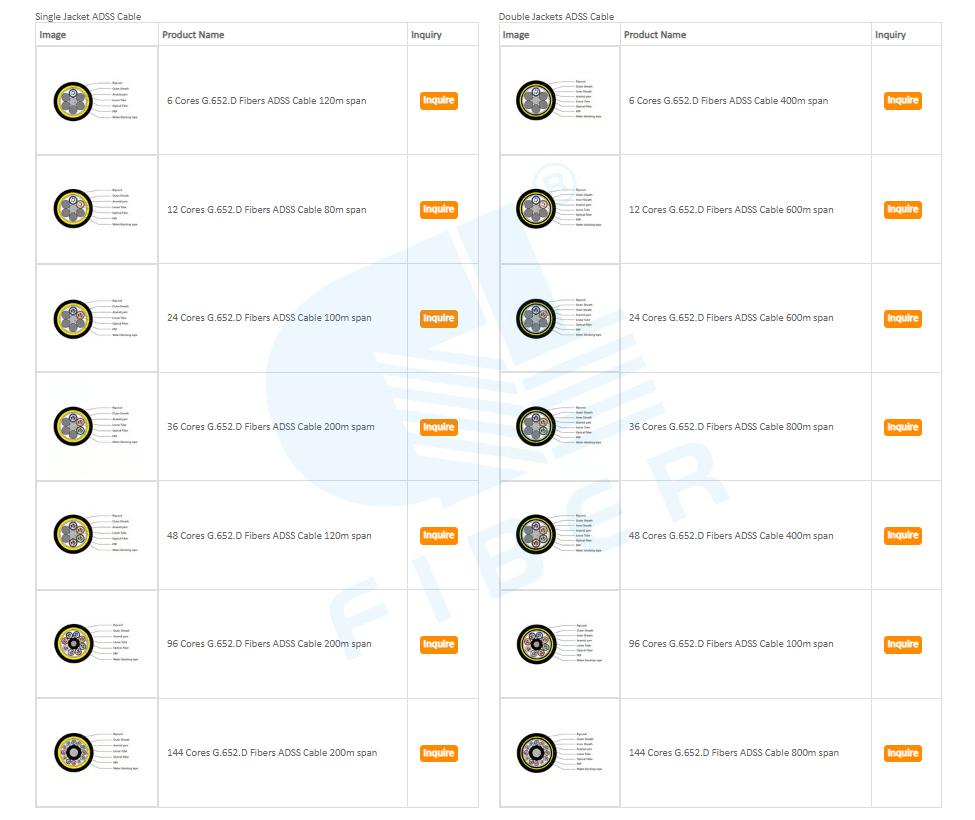When designing ADSS (All-Dielectric Self-Supporting) cables, multiple key factors need to be considered to ensure that the optical cables can operate safely, stably, and long-lasting on power lines. Here are some important steps and considerations when designing ADSS fiber optic cables:
Environmental condition analysis:
Meteorological conditions: Assess the maximum and minimum temperatures, maximum wind speed, hail, thunderstorm frequency and other extreme weather conditions in the area.
Mechanical loading: Consider the effects of vibration, galloping and possible transient pull forces on power lines.
Power line data collection:
Voltage level:
Determine the voltage level of the power line across, which directly affects the clearance distance and voltage withstand performance requirements between ADSS cables and conductors.
Number of optical cable cores: 2-288 cores
Sheath material: Anti-tracking/HDPE/MDPE Outer Sheath
Span (tower/pole): 50M ~1500M
Line structure: including phase spacing, conductor type, pitch size and other information.
Optical cable characteristic design:
Mechanical strength:
Select appropriate aramid yarn as reinforcing fiber to provide sufficient tensile strength to resist tension.
Insulation:
Optical cables must have good electrical insulation properties to avoid flashover or short circuits with high-voltage power lines.
Weather resistance:
The outer sheath material of the optical cable needs to be able to withstand the effects of ultraviolet radiation, ozone corrosion, moisture penetration and changes in environmental temperature differences.
Optical cable size and weight control:
It is necessary to calculate the minimum cross-sectional area that meets the mechanical requirements. At the same time, the convenience of installation and maintenance must also be taken into consideration to limit the overall diameter and weight of the optical cable.
Optical performance design:
When selecting the number and type of optical fiber cores, consider transmission capacity requirements and redundancy.
Optical fiber protection, including loose tube structure, filler and buffer layer design, ensures that the optical fiber can still maintain good transmission performance under stress and deformation.
Cross-domain safety distance calculation:
According to the safety regulations of the power system, calculate the minimum safe distance between optical cables and power lines of different voltage levels.
Accessory design:
Designed with supporting accessories such as hanging hardware, anti-vibration hammers, and anti-corona rings to ensure the stability and safety of optical cables under various working conditions.
Construction feasibility study:
Consider factors such as the laying-out method, tension control, and bending radius restrictions during the construction process.
QC:
Through the above steps, a complete ADSS optical cable design plan can be developed, including detailed specifications, selection suggestions, construction guidance, etc. After the design is completed, it is usually simulated and verified through professional software to ensure that the design meets the requirements of actual operating conditions.



